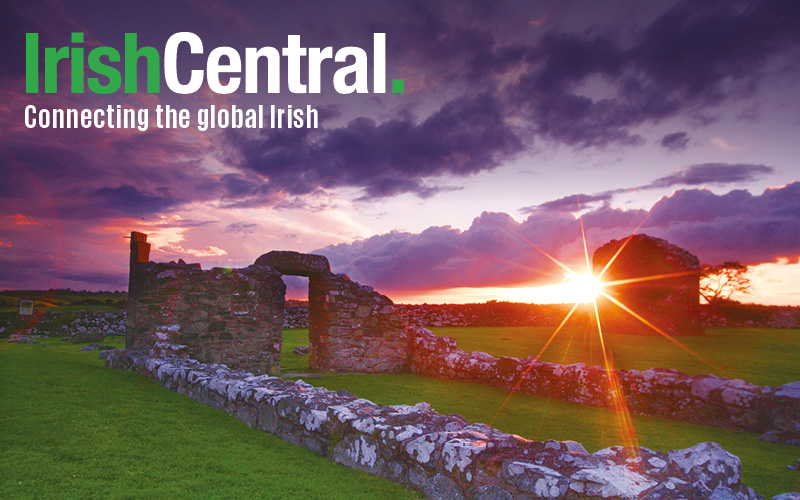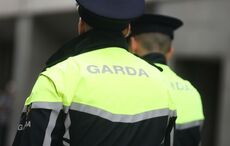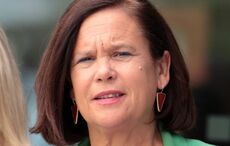For anyone who came of age in Ireland during the 1970s, festivals loomed large. There were all kinds of great festivals on the calendar.
The Dublin Horse Show in August was in its pomp. The Listowel Writers Week was inaugurated in 1970 and down the road there was the Ballybunion Bachelor Festival, but, as is alluded to in Diarmaid Ferriter’s magisterial study of the decade, “Ambiguous Republic: Ireland in the 1970s,” fans of music had the best craic of all.
The Sherkin Island Festival in 1978 lasted for seven days and seven nights, and it was only a one-day festival. Planxty played at the Claremorris Ham Festival in 1972, which, according to the band’s lead singer, Christy Moore, consisted of a smoked leg of ham in Andy Creighton’s Lounge window and eight late-night bar extensions.
“Many of these gigs,” he once said Moore, “were followed by fierce sessions that often went on into the next day … one night I was on stage eight hours after dropping half a tab of very pure acid.”
Ferriter, who is professor of modern Irish history at UCD and Ireland’s most prominent broadcaster of history, explores an extraordinary range of topics in his 700-page volume – availing of an avalanche of recently available archival material – from the country’s anti-apartheid movement to zinc deposits in Tara. Although the focus of the book is the 26 counties, he admits that the Troubles in the North, which ignited in 1969, defined the island of Ireland in the 1970s.
By the end of the decade, 1,900 had been killed, the worst year of atrocities coming in 1972, with an average of 30 shootings every day, most horrifically on Bloody Sunday in Derry when 13 people were murdered (and another fatally injured), and Bloody Friday when the IRA exploded 19 bombs over an hour across Belfast city.
There was ambivalence in the Republic of Ireland about the situation north of the border. The general public and politicians in the 26 counties, according to the historians referenced by Ferritter, were preoccupied with their own economy. As the RTÉ presenter and historian Brian Farrell pointed out the issue of the Troubles was more of a British Question than an Irish Question.
When it came down to it, people in the south couldn’t fathom Unionists or the culture of Protestantism; meanwhile Unionists were deeply distrustful of their political counterparts in the Republic.
Unionists, according to Brian Faulkner, who was the last prime minister of Northern Ireland before the abolition of its government in 1972, were wary of the ideas politicians from the South might “plant” in the British mind. Jack Lynch, his opposite number, he disdainfully reckoned to be a “wily Irishman”.
Politicians in the Republic realised too late, however, that if the dream of Irish unity was taken to its logical conclusion, it entailed full-scale civil war.
“One of the fears that Garret FitzGerald [Minister for Foreign Affairs, 1973-1977] would have had was there were suggestions at one stage in the middle of the decade that Britain might withdraw and, of course, that created panic,” says Ferriter. “What happens then?
“What are the consequences of that – a potential apocalypse, which is one of the reasons [the Irish government] championed the cause of the SDLP. As far as they were concerned: if it was left to extremists on both sides, the result would have been civil war, and they had to be very mindful of what they called ‘the Doomsday scenario’, which was withdrawal without any plan.
“The other side of that was how much would a united Ireland cost? There is a line in the book, quoting Declan Kiberd, ‘Make us pure, Lord, but not yet,’ and not if it involves financial sacrifice on our part.”
The chief driver for Ireland’s entry into the EEC in January 1973 was money rather than any ideological yearning to get closer to continental Europe. Income per head in the Republic was two-thirds of the UK level that year. Conservative estimates suggested that a quarter of Ireland’s population lived in poverty at the time. For example, 71% of the people surveyed by a group called People before Profit in Dublin’s Pearse Street neighbourhood were without hot water in 1971. But how poor were people relative to Irish people today?
“This is all about expectations and what people are used to and what they expected,” says Ferriter. “There are periods in the 1970s where there’s a lot of money around even at government level. The Labour Party ministers were trying to increase welfare payments and welfare entitlements. They’d some success in that regard.
“One of the great myths was that the Irish people weren’t as materialistic as people elsewhere but when they got access to money, people were taking foreign holidays for the first time, and they wanted the nice houses and the trappings of a consumer lifestyle; then when things go bad they complained viciously about taxes. Look at the big PAYE marches in the ’70s and farmers didn’t want to have to pay tax and were slowly dragged into the tax net.
“But I would think poverty was very different to what you have now in that we’re coming from a much higher base. Even a country that is now officially bankrupt and in bailout territory, there is still a lot of money around in terms of people’s salaries and their material possessions.”
Ferriter is particularly strong in teasing out social change, and its ramifications. He applauds the advances made by the women’s liberation movement, citing the young legal advocate Mary Robinson as one of the most impressive people from his study of the period. Remarkably, though, marital rape wasn’t criminalised until 1990.
Pope John Paul II made his landmark visit to Ireland as the decade drew to a close. Church-going, in a country that was 94% Catholic, remained popular, although it seems it may have been as much to do with custom as conviction.
Perhaps the playwright Brian Friel, one of the intellectual titans of the era, sums up the spiritual attitude of the general populous best from an interview in 1970: “From the religious point of view I’m a very confused man ... I suppose I’m a sort of practicing lapsed Catholic ... and I don’t see any great contradiction in this either.”
Éamon de Valera, Ireland’s great political leader from the twentieth century, passed away in 1975. His death prompted mixed emotions. Ferriter quotes Eibhear Walshe’s memoirs of a childhood growing up in Waterford in the 1970s, which includes a celebration on the night of Dev’s funeral by the author’s granny and her Redmondite cronies.
“They waked the former president by confident assertions that he was illegitimate, though this was not the term that they used, and that his name came from a New York Coffee brand ... as Cissie and the others got more excited, Dev’s private life and morals, in actuality beyond reproach, all came into discussion and Cissie told us how her distant cousin, who was a bishop, had phoned her up to offer to drive her to Dev’s funeral, simply for the pleasure of hearing the violence of her response and the unchristian nature of her language.”
Diarmaid Ferriter’s Ambiguous Republic: Ireland in the 1970s is published by Profile Books and is available on Amazon.




Comments